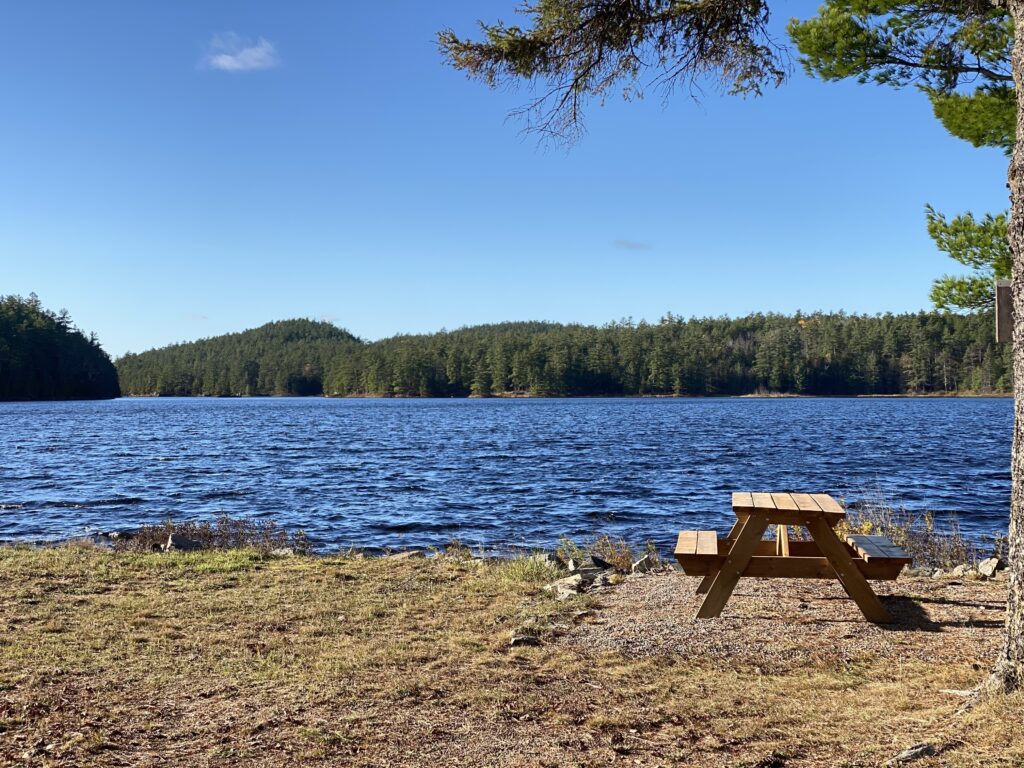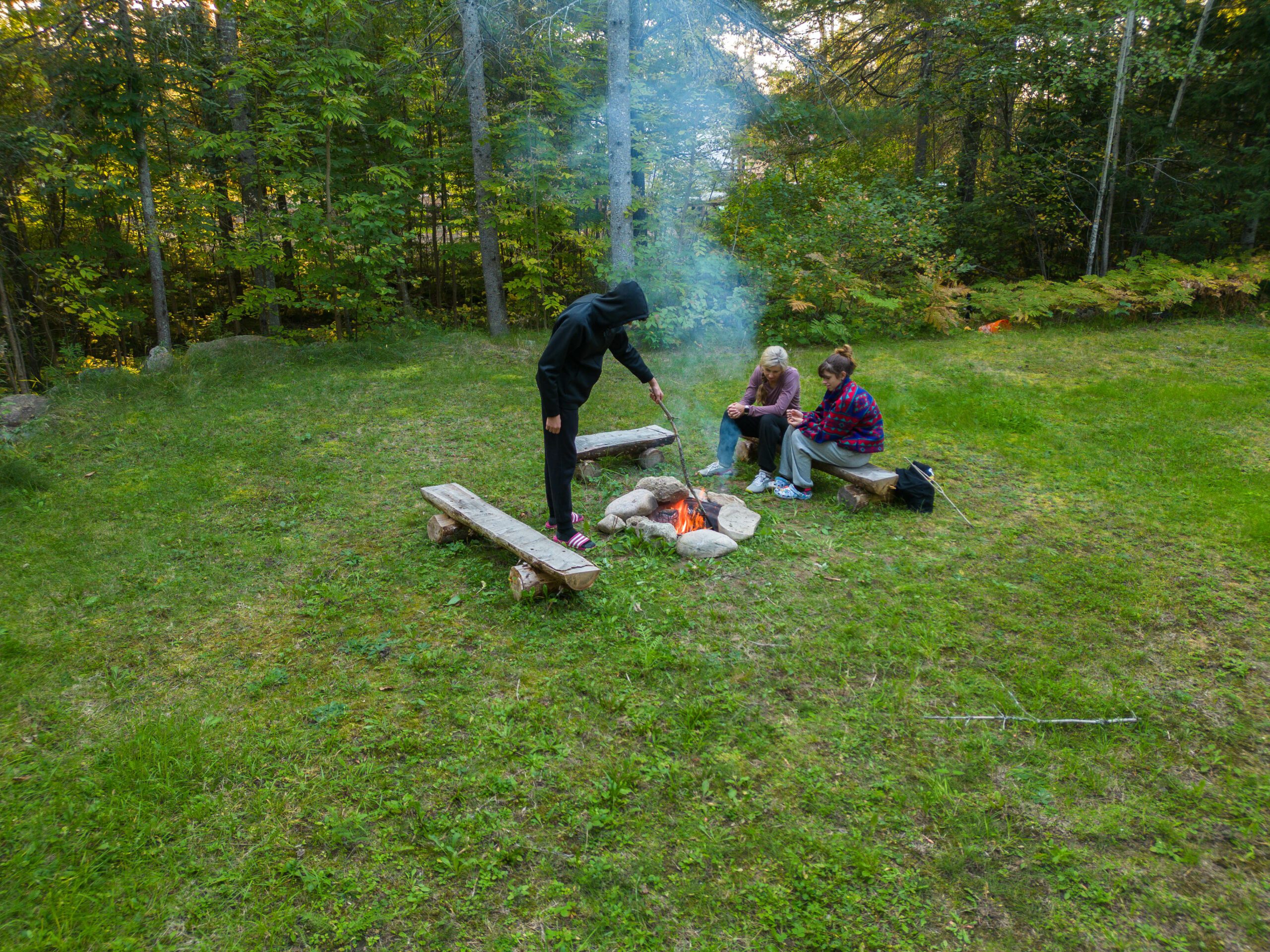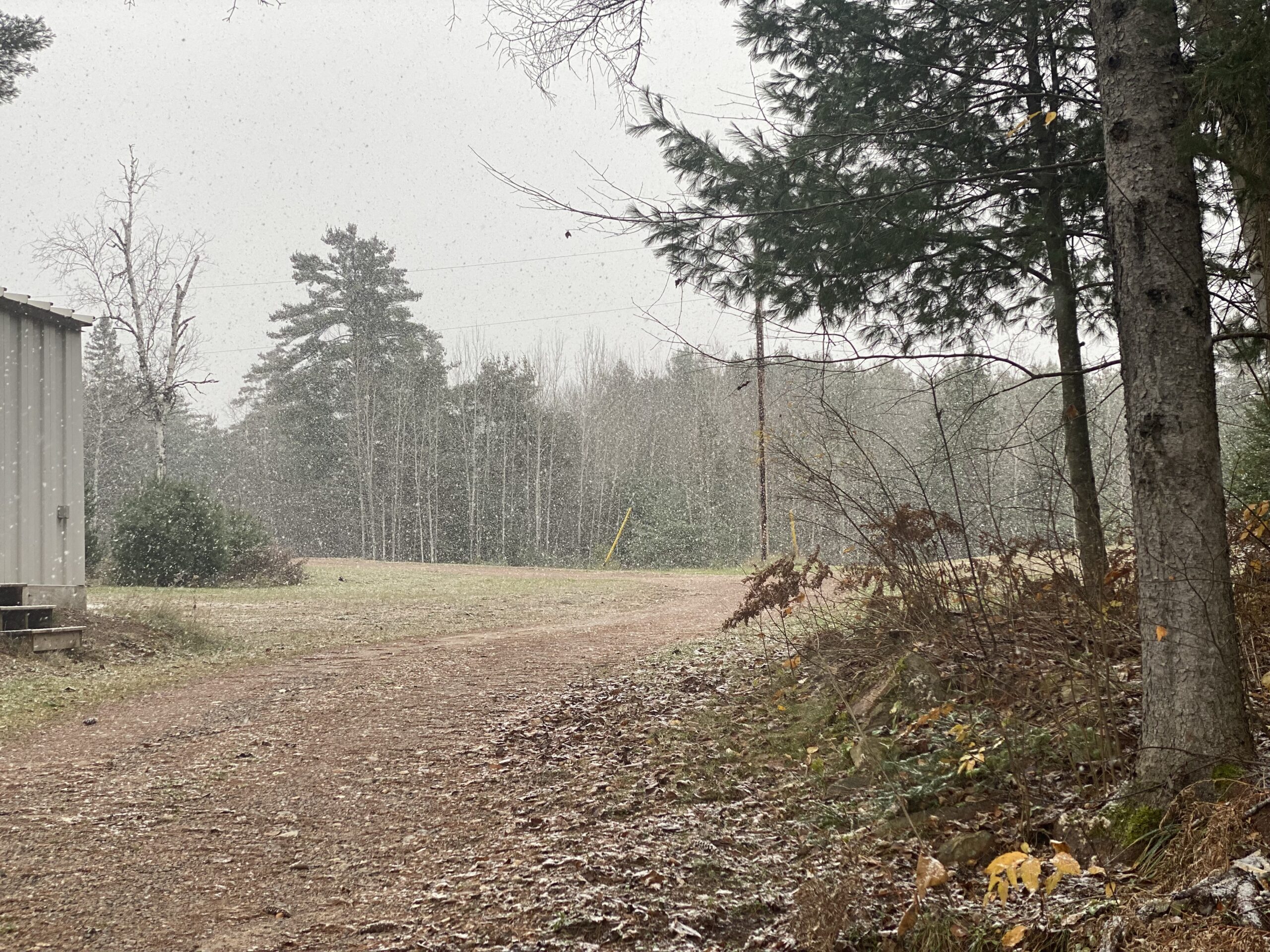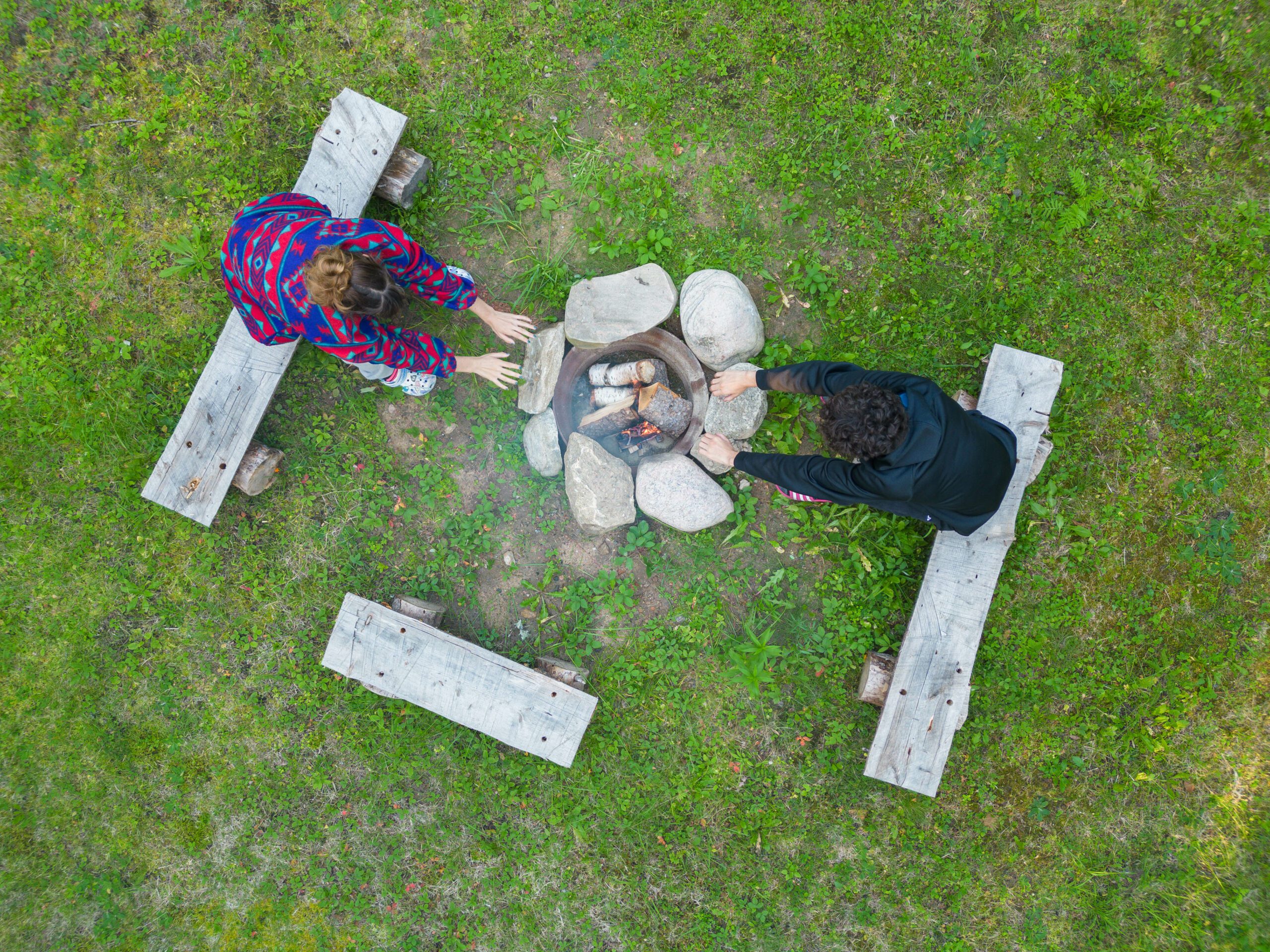While staying in a dome or a cabin for the entire “glamping” experience is always fun, it wouldn’t be summer vacation in North Bay unless you spend at least a few nights camping. At Otter Pointe, we may have elevated our camping experience by providing our guests a communal bathroom with a shower, but our campsites are still situated in a beautiful forest (full of wild animals) next to a lake (more on water safety in our “Guide to Water Safety” post!). Here are nine tips to make sure your next outdoor adventure is safe:
While none of us have a crystal ball handy, and the weather network seems to change its mind about the forecast depending on the hour and how many loons are yodelling in the distance, within 48 hours of your camping trip, you should have a reasonable idea of the weather you will likely encounter. Bringing essentials like rain gear (and snow gear for our fall campers up North) is always a good idea. If the weather predicts monsoon conditions, you can upgrade your rain jacket to add an extra tent fly, rain boots, and some fun in-tent activities if your group isn’t fans of frolicking in a downpour. Regarding emergencies, while you cannot predict them (hence the term- “emergency”), having a first aid kit, a reliable cell phone or a satellite phone if you will be out of cell service range, extra rope, a warm blanket, and a good idea of your campground’s layout and any emergency procedures they have in place are all good ideas. It is better to be overprepared than underprepared.
There are several wildfires across Canada annually. As the temperatures continue to fluctuate as years go by, the risk of severe fires increases. Embers have the potential to travel via root systems under the ground to spread, and scorching embers take a lot of time and water to die out. I cannot tell you how many people have said that they couldn’t get a fire going- or thought they had doused it- and POOF! A roaring inferno was suddenly blazing. Always assume that a fire has the potential to reignite, use two bucketfuls more water than you think the fire needs to be extinguished, and keep any flammable items away from the fire even after it is out in case it does reignite. We also recommend that you douse the fire an hour before you go to sleep so you can check on it right before bed to ensure nothing is still burning.
Remember that point about fire not going out and potentially reigniting? Imagine if you accidentally left your propane stove next to the fire you thought you put out. Or, imagine if you didn’t entirely turn off the gas and forgot to double-check before you went to bed. Always double-check valves and ensure your gas or propane equipment is turned off and secured. It is also a good idea to avoid storing your propane stoves inside your tent at night (just in case).
As I mentioned, there are several acres of wild forest at Otter Pointe—seven and a half acres, to be exact. While we have dreams of grandeur that involve blazing usable walking trails, it is currently a medley of intense and uneven bedrock, the occasional boulder or swamp, and many tall trees that make you quickly forget which direction you came from. Be aware of the creatures living in the forest, watch where you are going (bring a compass), tread lightly and with proper footwear, and bring a buddy in case you fall and hurt yourself. Every forest you walk into will be “used at your own risk,” so take care to minimize that risk so you can enjoy the beauty of the forest.
Having a first aid kit is all well and good, but if you opened it up, could you identify every item inside and its intended purpose? Did you pack the first aid kit yourself or assume the one you bought from the store would have everything you need inside of it? Did you consider what dangers you might encounter on your trip and how they might differ (and how the medical equipment required to treat them might also be different) from the kit you have? The adage goes measure twice, cut once. For first aid kits, research what you need first so you don’t have to pack twice.
We may all fantasize about driving as fast as Lewis Hamilton and feel we are competent drivers who can react to any situation the road throws. I caution you that while you may be an excellent driver, not everyone is. You cannot predict or control other people’s actions if they themselves do not know what they will do if they encounter an unexpected situation. In campsites, the speed limit is generally around 10kmh because you cannot predict small children playing hide and seek in the dark who may jump out in front of your vehicle or a tree in the forest that can fall in front of your car. While we hope these events will be unlikely and avoidable, the campsite owners set speed limits for everyone’s safety. If you want to test your driving prowess, travel to Germany and take a crack at the Autobahn. Relax if you are camping, and the car in front of you wants to travel at 5kmh. Your campsite will still be there in the extra 30 seconds it will take to reach your destination.
Most campgrounds are unsupervised by the staff. Otter Pointe, for example, has no medical or supervisory personnel. This means that if there are large rocks a child can climb and fall off of, large bodies of water a child could fall into and drown, or acres of forest a child can wander into and get lost in, it is the responsibility of the adult who brought the child to keep them safe. We can post safety rules all day long (such as not climbing big rocks, swimming without an adult, or wandering into the forest alone), but unless your child is old enough and mature enough to follow those rules (and remember them), you need to be on your game to keep them safe.
My executive summary of a typical day in the Mattawa/Rutherglen/North Bay area during the summer:
As you can see, seasons are a myth, and you need at least six costume changes if you want to be outside for more than twenty-five consecutive minutes. Instead of hiring a caravan to bring your weekend wardrobe, I use intelligent layers. A cool t-shirt and shorts or hiking pants with a rain jacket, thermal sweater, and hiking boots. Invest in a few good pieces to maximize your comfort in different weather conditions to make your life easier. As a bonus, if you shop at a store specializing in outdoor wear, the clothing is often durable and lightweight, making it easier to carry if you plan to take it on hiking trips. Also, please do me a favour: Unless you are on a beach, please wear running or hiking shoes (preferably hiking shoes) when camping. There will be rocks. There will be mud. There will occasionally be snow (read my blog “My First Trip to Algonquin” if you want to laugh or see evidence of how cruel snow can be), so wear appropriate footwear. If your shoes are named Jimmy, Christian, Stuart or Prada, wear them to Paris for fashion week and tell your camping buddies about them. Maybe go crazy and show them pictures on your phone. Those shoes have no place in the forest if you would like them to still be shoes when you leave the forest.











